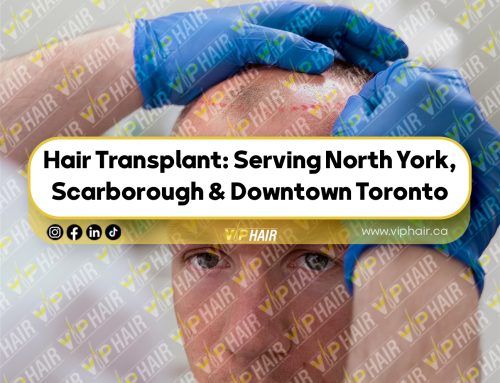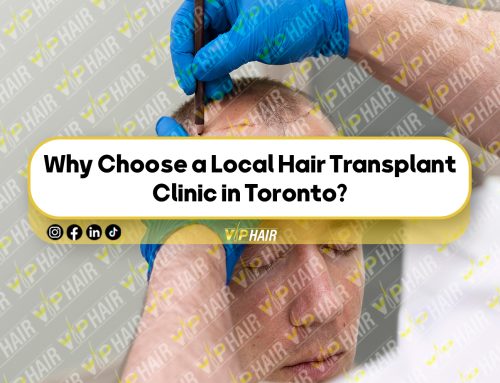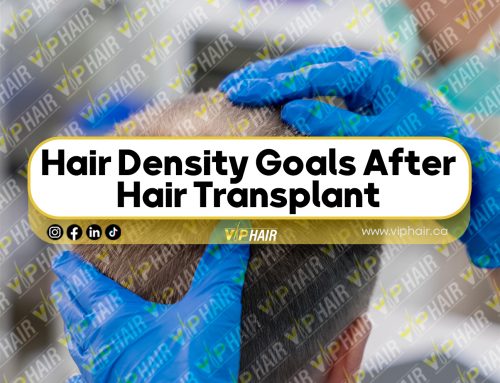Hair loss affects millions of women worldwide, and Toronto is no exception. Beyond cosmetic concerns, hair thinning can impact confidence, social interactions, and mental health. Hair Transplant procedures have become a popular solution for women seeking a permanent, natural-looking improvement.
While non-surgical options exist, they often provide temporary results. A hair transplant offers lasting density and coverage, but understanding the procedure, costs, recovery, and expected results is essential. This comprehensive guide will walk you through every aspect of Hair Transplant for women in Toronto, helping you make an informed decision.
Understanding Hair Loss in Women
Hair loss in women, or female pattern hair loss (FPHL), differs from male baldness. Recognizing the cause is crucial before pursuing a transplant.
Common Causes:
-
Genetics: Women with family histories of thinning or hair loss are more likely to experience similar issues.
-
Hormonal Changes: Pregnancy, menopause, thyroid disorders, or polycystic ovary syndrome (PCOS) can disrupt hair growth cycles.
-
Medical Conditions: Autoimmune disorders (like alopecia areata) or scalp infections may cause localized or diffuse hair loss.
-
Medications: Chemotherapy, blood thinners, or certain antidepressants may contribute to thinning.
-
Lifestyle Factors: Stress, poor nutrition, and harsh hair treatments can exacerbate hair loss.
Proper diagnosis by a dermatologist or certified hair transplant specialist in Toronto ensures that the treatment addresses the root cause.
What is a Hair Transplant?
A Hair Transplant involves relocating healthy hair follicles from a donor area (typically the back or sides of the scalp) to areas experiencing thinning or baldness.
Techniques:
1. Follicular Unit Transplantation (FUT)
-
Procedure: A strip of scalp is removed, and follicles are dissected under a microscope.
-
Advantages: Can harvest a larger number of grafts in a single session, cost-effective for extensive thinning.
-
Disadvantages: Linear scar, longer recovery, may be less suitable for women preferring short hairstyles.
2. Follicular Unit Extraction (FUE)
-
Procedure: Individual follicles are extracted directly from the donor area and transplanted.
-
Advantages: Minimally invasive, tiny dot scars, faster healing.
-
Disadvantages: More time-consuming, slightly higher cost, may require multiple sessions for large areas.
Choosing the right technique depends on hair type, extent of hair loss, desired density, and patient preference.
Who is a Good Candidate?
Not every woman is ideal for a hair transplant.
Factors to Consider:
-
Extent and Pattern of Hair Loss: Localized thinning (frontal or mid-scalp) is ideal. Diffuse thinning may require pre-treatment with medications.
-
Donor Hair Availability: Healthy, thick hair at the back or sides ensures successful transplantation.
-
Health Status: Candidates should be generally healthy without uncontrolled medical conditions.
-
Expectations: Realistic understanding that transplants improve density but may not achieve total coverage.
-
Age: Adults with stable hair loss patterns are preferred. Early intervention often yields better outcomes.
Hair Transplant Procedure in Toronto
1. Initial Consultation
During the consultation, the specialist evaluates:
-
Hair loss severity and donor area quality
-
Patient’s lifestyle, health history, and medications
-
Suitable technique (FUE or FUT)
-
Estimated graft numbers and session count
-
Timeline and expected results
-
Cost breakdown and payment options
2. Preparing for Surgery
Preparation includes:
-
Avoiding blood-thinning medications
-
Scalp cleaning with antiseptic solutions
-
Pre-procedure photos for monitoring results
-
Arranging transportation if sedation is used
3. The Transplant Procedure
-
Anesthesia: Local anesthesia or mild sedation ensures patient comfort.
-
Extraction: Follicles are harvested using FUE or FUT techniques.
-
Implantation: Follicles are implanted with precise angling and spacing to mimic natural growth.
-
Duration: 4–8 hours depending on graft numbers and complexity.
4. Post-Procedure Care
Proper care is critical:
-
Avoid touching or scratching transplanted areas
-
Gentle washing after 48 hours with recommended shampoos
-
Avoid direct sunlight, swimming, and strenuous activities for 2–4 weeks
-
Follow-up appointments to monitor growth and address any issues
5. Recovery Timeline
-
First week: Mild swelling and redness, scabs form around grafts
-
Weeks 2–4: Initial shedding of transplanted hair (normal process)
-
Months 3–6: New hair growth begins, noticeable improvement
-
Months 8–12: Full results visible with natural density
Costs of Hair Transplant for Women in Toronto
Costs vary based on multiple factors:
1. Technique
-
FUE: $6,000–$15,000 per session, ideal for women who prefer minimal scarring
-
FUT: $5,000–$12,000, suitable for extensive coverage
2. Number of Grafts
-
Average price per graft: $5–$10
-
More grafts increase cost proportionally
3. Clinic Reputation
Premium clinics in Toronto charge more due to higher expertise and quality standards.
4. Additional Costs
-
Pre-op assessments and blood tests
-
Post-op PRP therapy or hair growth treatments
-
Medications and supplements to support hair growth
-
Optional accommodations for specialized clinics
Benefits of Hair Transplant for Women
-
Permanent Solution: Unlike temporary wigs or topical treatments, transplants offer lasting results.
-
Natural Appearance: Hair blends seamlessly with existing strands.
-
Minimal Downtime: Most patients resume work within a week.
-
Confidence Boost: Improved self-esteem and social confidence.
-
Low Maintenance: Transplanted hair grows naturally and requires standard hair care.
Risks and Considerations
-
Temporary swelling or redness
-
Minor scarring (FUT) or dot scars (FUE)
-
Infection risk if post-op care is neglected
-
Less optimal results if donor hair is insufficient
Choosing an experienced, certified surgeon significantly reduces risks.
Alternatives to Hair Transplant
-
PRP Therapy: Stimulates natural hair growth
-
Medications: Minoxidil or anti-androgens
-
Laser Therapy: Improves follicle health
-
Hair Systems: High-quality wigs for immediate results
How to Choose the Right Clinic
-
Verify certification and experience in female hair transplants
-
Check reviews and before/after photos
-
Ensure personalized treatment plans
-
Request transparent pricing
-
Confirm post-care support and follow-ups
Case Study: Female Hair Transplant Success
A 38-year-old patient underwent FUE:
-
Grafts: 2,500 for frontal/mid-scalp coverage
-
Recovery: Mild swelling for 3 days, returned to work after 5
-
Results: Noticeable density at 6 months, full growth at 12 months
-
Satisfaction: High confidence and natural appearance
Conclusion
A Hair Transplant for women in Toronto is an effective solution for lasting hair restoration. Understanding the procedure, costs, recovery, and post-care ensures informed decisions and optimal results. With a certified, experienced specialist, women can regain natural hair density, boost confidence, and enjoy a permanent, low-maintenance solution to hair loss.






Leave A Comment